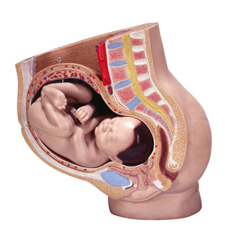Webster Technique

Resolving subluxations where the sacrum joins the pelvis (hip) helps balance the pelvis.
Subluxations where the sacrum joins the pelvis (hip) can be quite common during the course of pregnancy.
The Sacral Subluxation
Developed by the late Larry Webster, D.C., the chiropractic technique he developed and taught chiropractors around the world, helps release stress on the pelvis, relaxing surrounding ligaments and reducing the sacral subluxation to help restore more normal function.
Sacral subluxations may cause the tightening and twisting of pelvic muscles and ligaments. The goal of the adjustment is to reduce the effects of subluxation and the associated dysfunction of the sacroiliac joint. The result? Neurobiomechanical function in the sacral/pelvic region is improved, benefiting pregnant mothers or others with sacral subluxations. Webster technique is a specific chiropractic sacral analysis and diversified adjustment for all weight-bearing individuals.
High Success Rate
The July/August 2002 issue of the Journal of Manipulative and Physiological Therapeutics reports that 82% of chiropractors using the Webster Technique reported success in reducing the sacral subluxation.
Sometimes when using the Webster Technique, the associated dysfunction of the sacroiliac joint can be reduced with just one adjustment. But usually it takes between three to 10 visits over a several week period.
Because the Webster Technique relies on the inborn intelligence of the mother and baby, there is little risk. The Webster Technique is based on the positive experiences of pregnant patients, the clinical experience of its many practitioners, academic studies on the subject of sacral subluxation and its consequences to proper pelvic function.
Dr. Stacey Rosenberg is one of the only chiropractors on the Sunshine Coast trained to use the Webster Technique. She combines it with Bagnall Technique, which adds a few other checks and chiropractic adjustments (if needed) such as pubic symphysis dysfunction and pelvic ligaments and muscles to optimize the mother’s pelvic balance.
